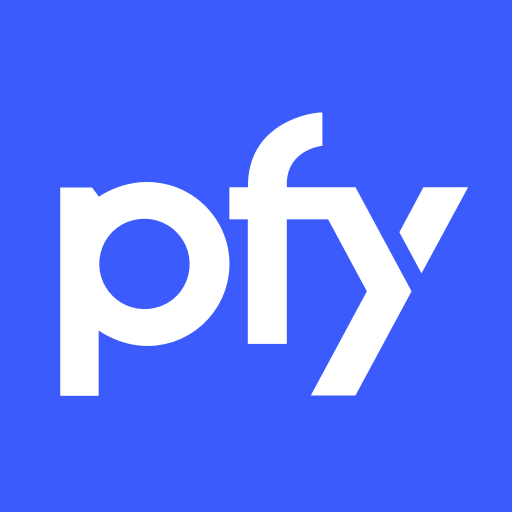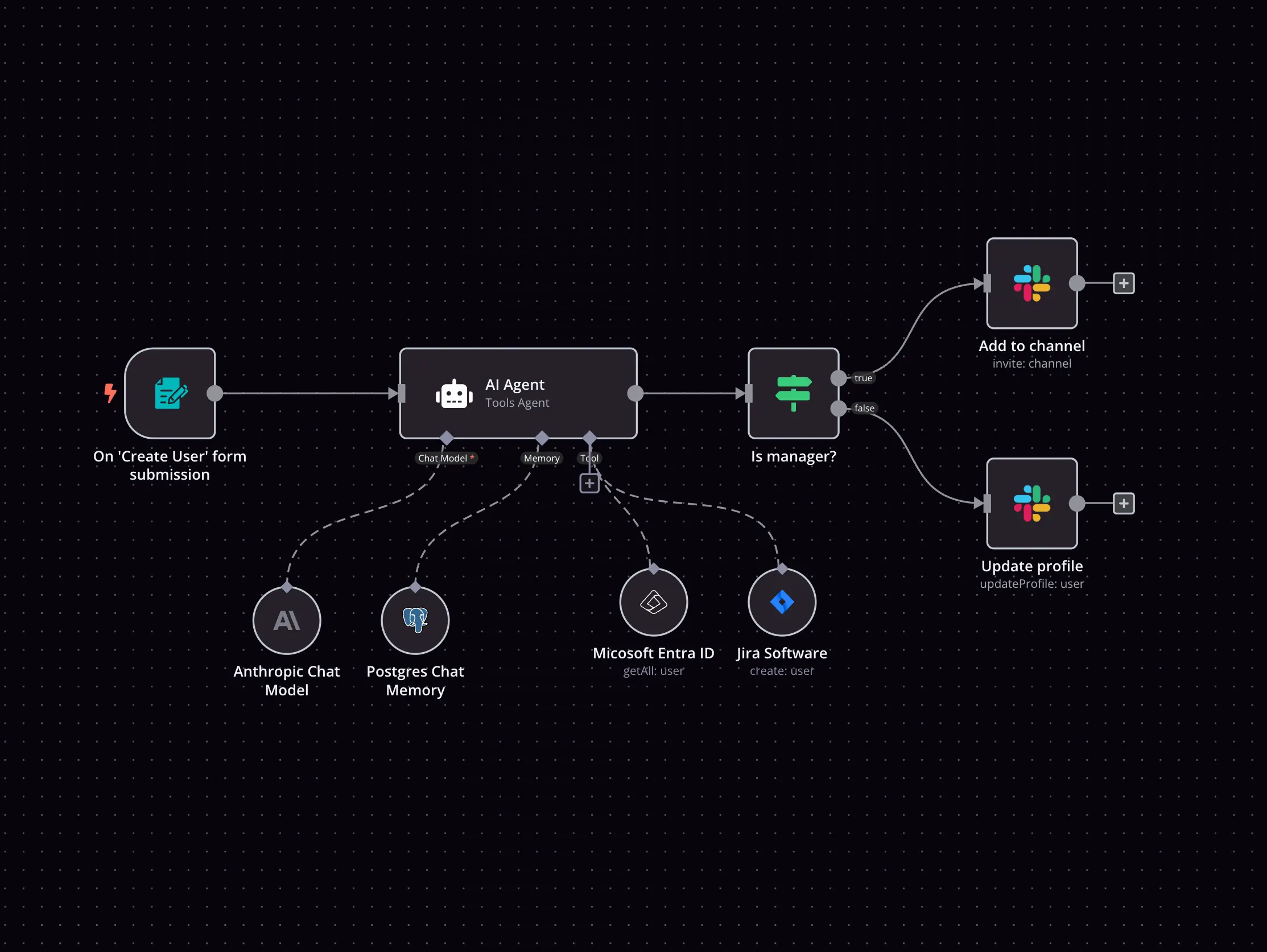NMKR and Pipefy integration
Save yourself the work of writing custom integrations for NMKR and Pipefy and use n8n instead. Build adaptable and scalable Development, workflows that work with your technology stack. All within a building experience you will love.


How to connect NMKR and Pipefy
Create a new workflow and add the first step
In n8n, click the "Add workflow" button in the Workflows tab to create a new workflow. Add the starting point – a trigger on when your workflow should run: an app event, a schedule, a webhook call, another workflow, an AI chat, or a manual trigger. Sometimes, the HTTP Request node might already serve as your starting point.
Build your own NMKR and Pipefy integration
Create custom NMKR and Pipefy workflows by choosing triggers and actions. Nodes come with global operations and settings, as well as app-specific parameters that can be configured. You can also use the HTTP Request node to query data from any app or service with a REST API.
Supported API Endpoints for NMKR
Create project
Creates a new project in the NMKR Studio.
Edit project
Edits an existing project in the NMKR Studio.
Create project
Create a new project.
Upload file and metadata
Upload a file along with its metadata to the project.
Create project
Create a project via NMKR Studio API
Upload file and metadata
Upload a file to your project along with optional metadata.
Delete token
Allows for the deletion of a specified token.
Burn token
Permits the burning of a specified token.
Update token
Allows for updating the token after it is minted or revealed.
Upload token
Uploads a single token to NMKR Studio.
Bulk Upload
Bulks uploads files and metadata for tokens.
Bulk upload files and metadata
Upload files and associated metadata in bulk.
Bulk upload via SFTP
Upload files and metadata via SFTP transfer.
Edit token
Edit existing token details.
Add token-specific metadata
Add specific metadata to a token.
Check metadata
Perform a check on the metadata of a token.
Duplicate token
Create a duplicate of an existing token.
Create new Prices
Enables the creation of new prices for sales.
Free Drops
Facilitates free drops in the sales process.
Custom Token payment
Allows for setting up custom token payment options.
Discounts
Enables the creation and management of discounts.
Set up Sales
Establish sales configuration for tokens.
Manage token sales conditions
Set conditions and whitelisting for token sales.
Set up NMKR Pay
Configure NMKR Pay for handling transactions.
Create Testnet Account
Creates a new account on the testnet.
Testnet Wallet & tADA
Manages the testnet wallet and tADA tokens.
Minting on Demand
Allows for minting tokens on demand.
Manual Minting
Permits manual minting of tokens.
Manual minting
Perform manual minting of NFTs.
Mint random token
Mint a token randomly selected out of your project to a specific wallet address.
Mint specific token
Mint and send a specific token of a project to a wallet address.
Airdrop with random distribution
Facilitates airdrops with a random distribution method.
Airdrop with specific distribution
Enables airdrops with a specified distribution method.
Create unique NMKR Pay Link for random token sales
Generate a unique pay link for random token sales.
Create NMKR Pay Link for specific token sales
Generate a pay link for specific token sales.
Get payment address for single NFT sales with native tokens
Retrieve payment address for single NFT sales using native tokens.
Create NMKR Pay Link for a multi-specific tokens sale
Generate a pay link for a multi-specific tokens sale.
Secondary sales via NMKR Pay
Handle secondary sales transactions through NMKR Pay.
Create NFT
Uploads an NFT along with its metadata.
To set up NMKR integration, add the HTTP Request node to your workflow canvas and authenticate it using a generic authentication method. The HTTP Request node makes custom API calls to NMKR to query the data you need using the API endpoint URLs you provide.
See the example hereThese API endpoints were generated using n8n
n8n AI workflow transforms web scraping into an intelligent, AI-powered knowledge extraction system that uses vector embeddings to semantically analyze, chunk, store, and retrieve the most relevant API documentation from web pages. Remember to check the NMKR official documentation to get a full list of all API endpoints and verify the scraped ones!
Supported API Endpoints for Pipefy
Create card
Creates a new card in the specified pipe.
Import cards
Imports multiple cards to the specified pipe.
Delete card
Deletes a card by its ID.
Move card to phase
Moves a card to a specified phase.
Update card
Updates an existing card
Lookup card by ID
Lookup a card by its ID
Fetch group of cards
Fetches a group of cards based on arguments
Fetch cards importer history
Lookup the cards importer history by the pipe ID
Fetch cards based on inputs
Fetch cards based on fields' inputs
Create comment
Creates a comment on a specific card.
Delete comment
Deletes a specific comment.
Create label
Creates a new label in the specified organization.
Delete label
Removes a specific label.
Update label
Modifies the attributes of a label.
Create organization
Creates a new organization.
Delete organization
Deletes a specific organization.
List organizations
Endpoint for retrieving a list of organizations.
Create phase
Creates a new phase within a specified pipe.
Delete phase
Removes a specific phase from a pipeline.
Create pipe
Creates a new pipe.
List pipes
Endpoint for retrieving a list of pipes.
Create table
Creates a new table in the specified organization.
Delete table
Deletes a specific table.
List database tables
Endpoint for retrieving a list of database tables.
Create table record
Creates a new record in the specified table.
Create webhook
Creates a new webhook for the specified organization.
Delete organization webhook
Deletes a specific webhook for an organization.
Update webhook
Updates an existing webhook.
Create webhook
Endpoint for creating webhooks to receive real-time updates.
Delete field condition
Removes a specific field condition.
Delete inbox email
Deletes an inbox email configuration.
Delete pipe
Deletes a specific pipe.
Remove user from organization
Removes a user from a specified organization.
List users
Endpoint for retrieving a list of users.
Set role
Assigns a specific role to a user.
Update field condition
Updates an existing field condition.
Create card relation
Establishes a relationship between two cards.
Update record
Updates details of a specific record.
Create authentication
Endpoint for creating authentication tokens.
Create service account
Endpoint for creating service accounts for authentication.
Create personal access token
Endpoint for creating personal access tokens for user authentication.
Example query
An example endpoint for making GraphQL requests.
Import records
Endpoint for importing records into the system.
Import cards
Endpoint for importing cards into the system.
Import records
Endpoint for importing records into the system.
Create organization webhook
Endpoint for creating webhooks specific to organizations.
Create pipe and table webhook
Endpoint for creating webhooks for pipes and tables.
List table records
Endpoint for retrieving a list of records for a specific table.
To set up Pipefy integration, add the HTTP Request node to your workflow canvas and authenticate it using a generic authentication method. The HTTP Request node makes custom API calls to Pipefy to query the data you need using the API endpoint URLs you provide.
See the example hereThese API endpoints were generated using n8n
n8n AI workflow transforms web scraping into an intelligent, AI-powered knowledge extraction system that uses vector embeddings to semantically analyze, chunk, store, and retrieve the most relevant API documentation from web pages. Remember to check the Pipefy official documentation to get a full list of all API endpoints and verify the scraped ones!
NMKR and Pipefy integration details
FAQ
Can NMKR connect with Pipefy?
Can I use NMKR’s API with n8n?
Can I use Pipefy’s API with n8n?
Is n8n secure for integrating NMKR and Pipefy?
How to get started with NMKR and Pipefy integration in n8n.io?
Looking to integrate NMKR and Pipefy in your company?
The world's most popular workflow automation platform for technical teams including
Why use n8n to integrate NMKR with Pipefy
Build complex workflows, really fast


